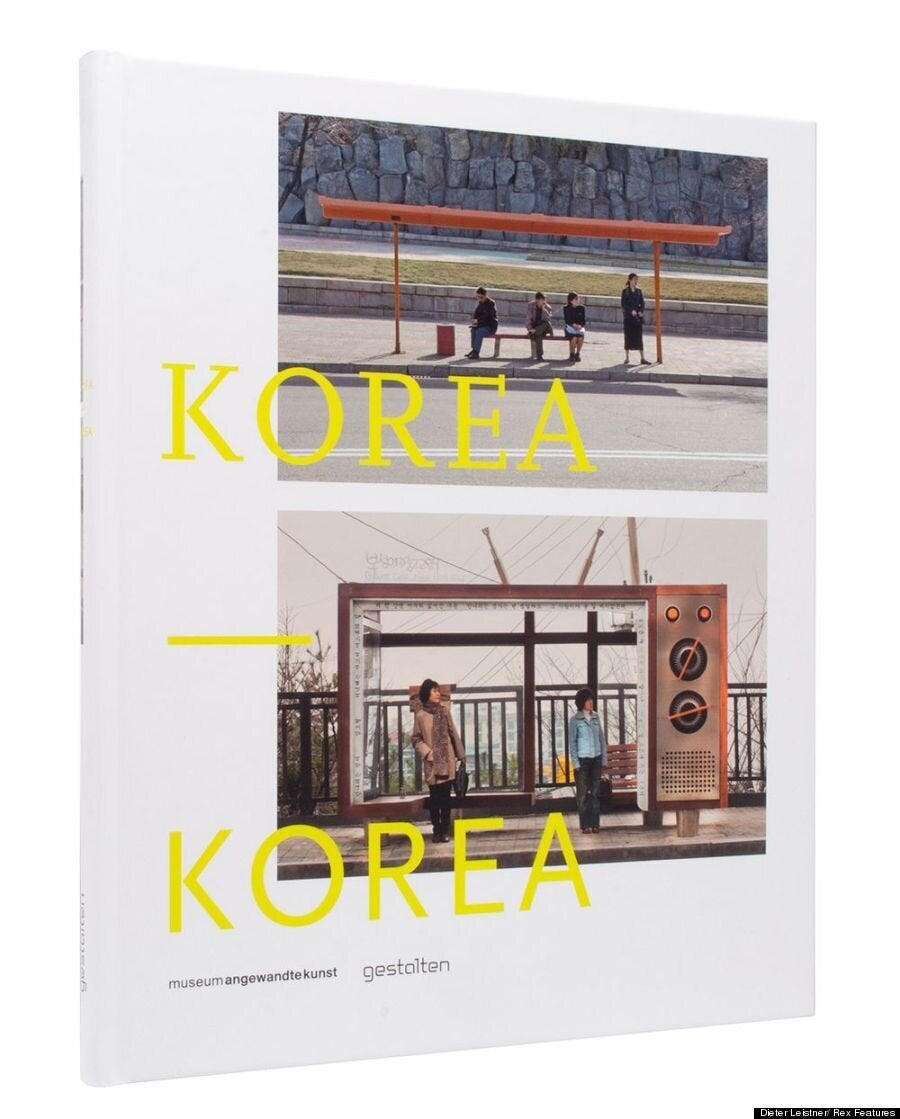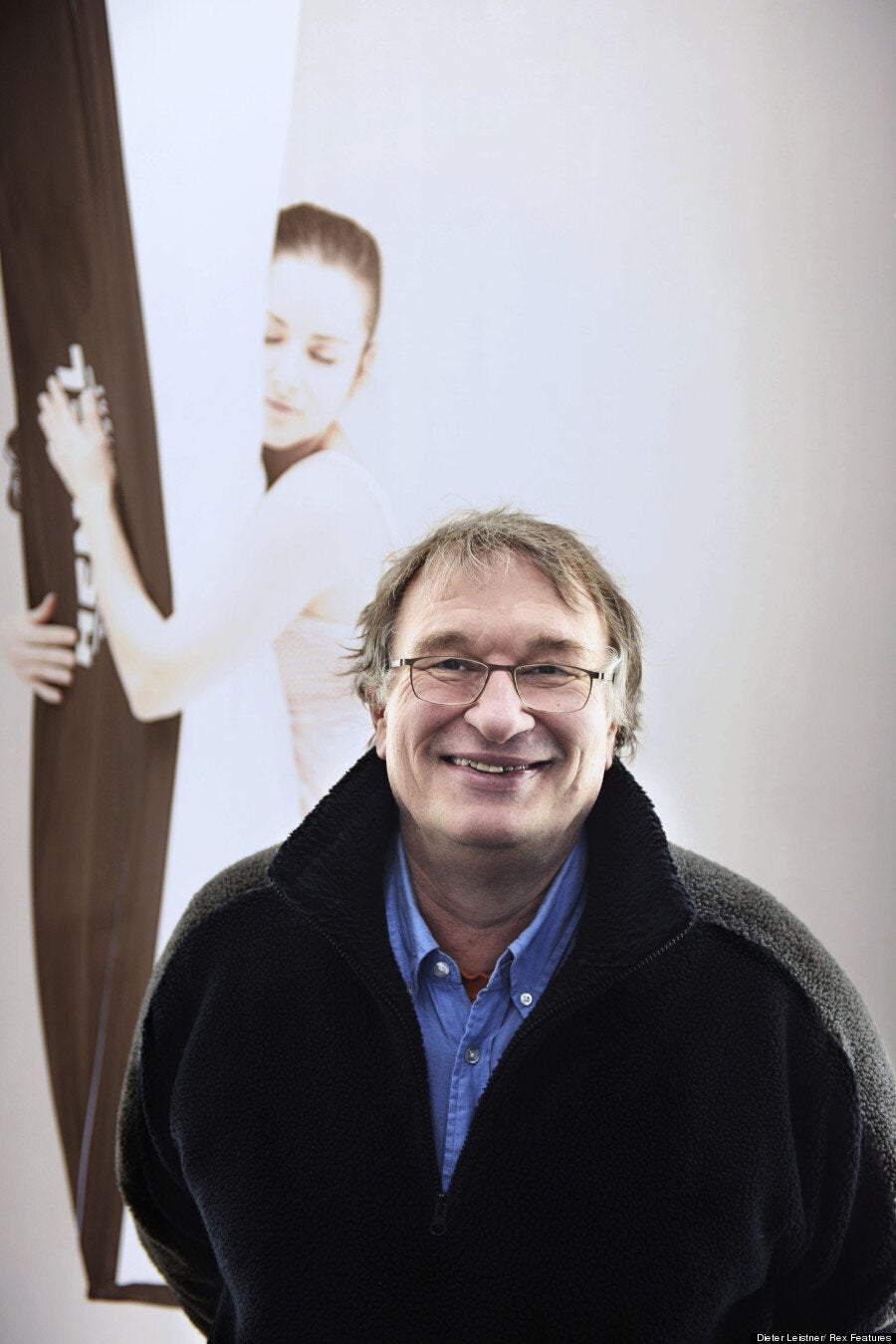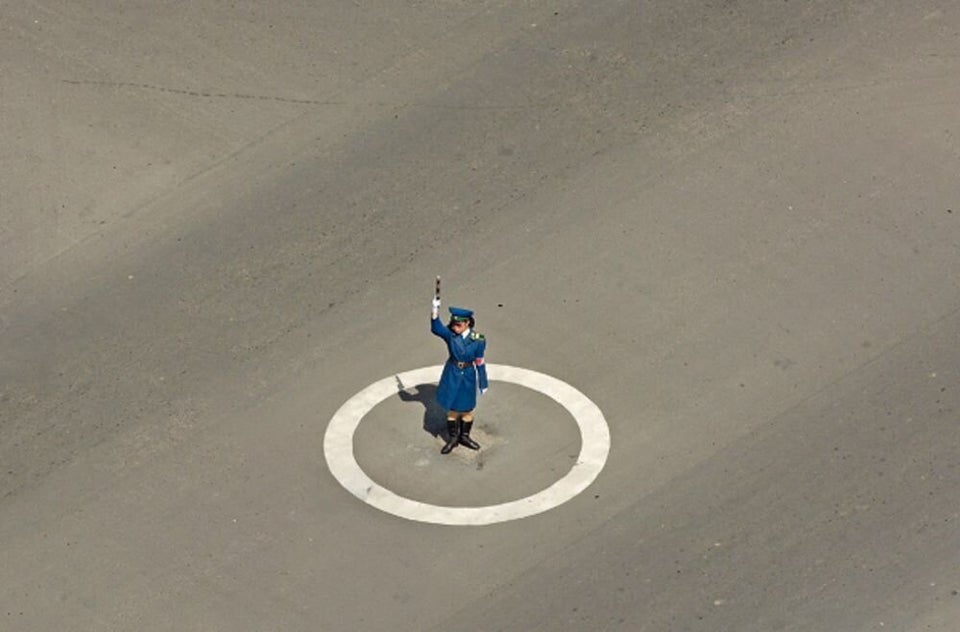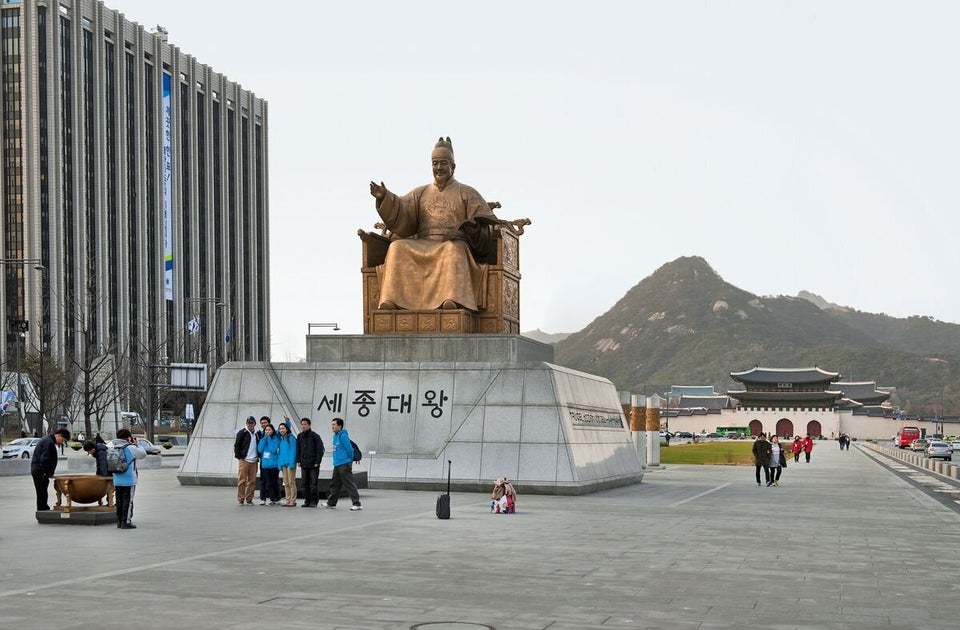The stark, harsh contrasts between life in North and South Korea are laid bare in this striking photo series.
Photographer Dietner Leistner’s images explore the differences of everyday public scenes in the capital cities of the highly controlled North Korea and the cosmopolitan and liberal South Korea respectively.
They illustrate just how vastly lifestyles vary between the rigid, staid landscape of Pyongyang and the cosmopolitan and liberal streets of Seoul.

Dietner Leistner's images make up the book Korea: Korea
Leistner was given official permission to explore Pyongyang, North Korea in 2006. The corresponding photos of Seoul were taken on a trip six years later in 2012.
He sought to find similar locations to compare to the scenes in North Korea, but they had a very different feel.
The photos of commuters on the tube reveal sharp contrasts of cultures in the two countries.
In Seoul people can be seen chatting on the subway, whereas those on the Metro in North Korea appear subdued.
North Korea (scroll down for the series on South Korea
The photos of North Korea showcase bronze statues of Communist heroes and wide avenues with very few cars and people.
The bustling streets of Seoul could not be more different, choked with cars and people and late night shopping.
The pictures make up a book – aptly titled Korea-Korea –created as part of the exhibition "Korea Power: Design and Identity," which was held at Frankfurt's Museum Angewandte Kunst from April - August 2013.
Korea-Korea reflects on some of the similarities shared between the citizens of Germany when the country was divided and the split of North and South Korea.
Until 1989, both Germans and Koreans suffered the same fate of living in a divided land.
Leistner's photos are supported by excerpts from two diaries. The first is written by Philipp Sturm, who grew up in East Germany, he accompanied Dieter Leistner to Pyongyang.
The second was written by Ahn Hehn-Chu, who was born in Germany to Korean parents, and has regularly visited Seoul since she was a child.
South Korea
In her diary entry in the book she describes how dynamic Seoul is. She writes: "I've been to the former night market in Dongdae-mun (East Gate) at 4 a.m. to go shopping before but this is the first time I've gone to a hair salon that's open 24 hours."
Sturm's account of North Korea highlights the strict regulations imposed on visitors, and what they are allowed to photograph and record.
After landing in Pyongyang with Leistner, he explains: "Once inside, border guards stamp our passports and ask us to hand in our mobile phones for the duration of our visit; for security reasons, they say."

Leistner sought to photograph similar locations in the two countries
Sturm also recounts visiting the Mangyongdae Children's Palace, where school children can part in extracurricular activities in line with their talents.
"Countless children appear, as if ordered and perform for us and our escorts on command," says Sturm.
Sturm and Hehn-Chu's accounts represent the vast differences between the north and south.

